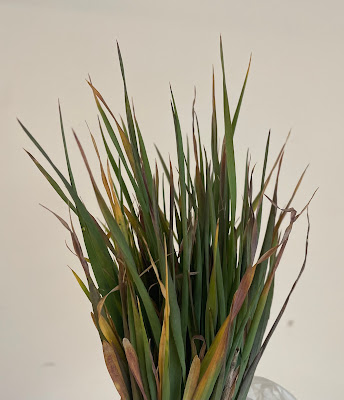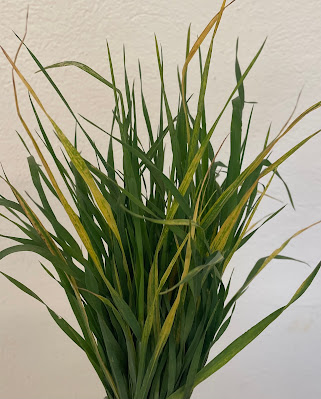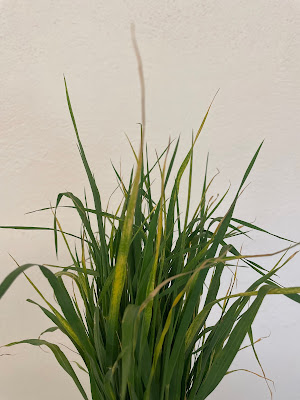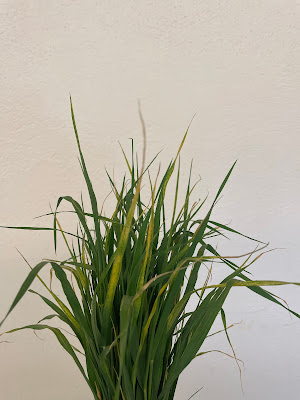Wheat streak mosaic in southern Alberta,
02-June-2023, Dr. M. Harding, AAI, Brooks, AB
Wheat streak mosaic (WSM)
is a disease caused by the wheat streak mosaic virus (WSMV). The virus
is vectored by the wheat curl mite. The virus and vector do not normally
overwinter in Alberta unless they can infect a “green bridge” host in the fall,
such as winter wheat, fall rye, or perennial grasses. As a result, we don’t
always see WSM symptoms in Alberta wheat fields every summer. Reports of WSMV
on the Canadian prairies have occurred in 31 of the past 68 years and the most
recent epidemics in Alberta were in 2017, and there were >10 fields
confirmed in southern Alberta in 2022.
This post is to alert Alberta cereal
producers that WSMV has been confirmed in southern Alberta in early June, 2023.
Producers, agronomists and crop scouts are encouraged to watch for symptoms of
WSM on wheat (winter, spring, durum), barley, corn and many other cereals and
grasses. Symptoms such as yellowing of leaves in a streaked or stippled
pattern, and curling of leaves, are the first to appear. On some hosts, purple
discoloration may appear. Symptoms may appear first at the field edge, on
volunteer wheat, or on winter wheat crops. At later stages, infected plants may
become stunted, discolored (lemon yellow) and rosetted. If infection occurs
before jointing, it can severely reduce or even prevent grain formation.
There are no in-season management
options other than taking the crop early for silage or green feed. If severe
infections occur early, it may be best to terminate the crop and reseed with a
short-season alternative that is not a host for WSMV. Any broadleaf crop is a
suitable non-host option. There are no chemicals registered for management.
Fungicides are not effective against WSMV, and miticides (to kill the vector)
are rarely able to make any impact due to the ability of the mites to ‘hide’
and avoid contact with the pesticide.
The best way to control WSMV is to
practice a crop rotation with a 2+ year break between cereals, and avoid any
green bridge hosts (cereal volunteers, and winter cereals) that will allow
overwintering of the virus and vector. Winter cereals can still be grown nearby
an infested field, but seeding should be delayed until at least 2 weeks after
all adjacent cereal crops (5-10 miles) have been harvested.
Photos of symptoms of WSMV in wheat, June 2, 2023, courtesy of Dr. Mike Harding, Alberta Agriculture and Irrigation, Brooks, AB.
The PCDMN wishes to sincerely thank Dr. Harding for bringing this to our attention and for writing the blog post. Dr. Harding also contributed a report to the PCDMN in June of 2022. See the following link for the report and some excellent photos of symptoms in the field!
https://prairiecropdisease.blogspot.com/2022/06/wheat-streak-mosaic-virus-wsmv-has.html





